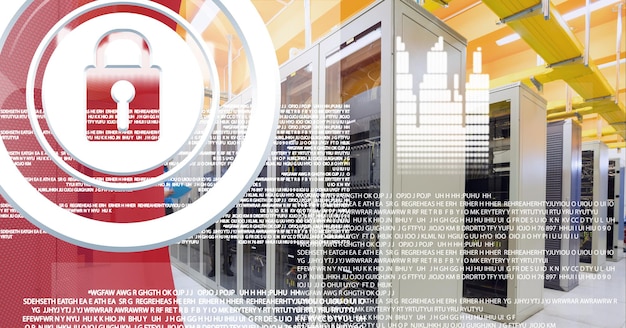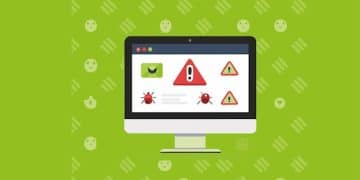How to Use a Free Antivirus for Maximum Computer Protection

Using a free antivirus program is a practical way to shield your computer from malware, viruses, and other online threats by installing the software, running regular scans, and keeping it updated.
In today’s digital landscape, safeguarding your computer from cyber threats is paramount. Learning how to use a free antivirus program to protect your computer from threats is a cost-effective way to get essential protection against malware, viruses, and other malicious software that can compromise your data and system performance.
Understanding the Basics of Free Antivirus Software
Free antivirus software provides a crucial first line of defense against a wide range of cyber threats. While it might not offer all the bells and whistles of paid versions, it delivers essential protection to keep your computer safe.
It is worth knowing what free antivirus software includes and how it can benefit your computer. Here’s what it involves:
What Free Antivirus Includes
Free antivirus programs typically include core features to detect and remove malware, viruses, and other common threats. These programs act as vigilant guards, constantly monitoring your system for anything suspicious.
Benefits of Using Free Antivirus
The primary benefit of using free antivirus software is the cost savings. You get a necessary layer of security without spending any money. Free antivirus can also protect against common threats, keeping your system running smoothly and secure.
To leverage your benefits, consider these options:
- Protection Against Common Threats: Free antivirus software guards against viruses, malware, and other common cyber threats, ensuring your system remains secure.
- Real-Time Scanning: It continuously monitors your computer, detecting and blocking threats as they appear, providing around-the-clock protection.
- Regular Updates: Free antivirus programs offer regular updates, which help them stay ahead of the latest threats to ensure your computer remains protected.
In conclusion, understanding the basics of free antivirus software involves knowing its core features and recognizing the significant benefits it offers. While free antivirus may not have all the advanced features of paid versions, it provides robust, essential protection against common cyber threats, making it an invaluable tool for everyday computer security.
Choosing the Right Free Antivirus Program
Selecting the appropriate free antivirus program is essential to ensure your computer receives the protection it needs. With numerous options available, it’s important to evaluate different factors and user reviews to make an informed choice.
Here is how you can find the best free antivirus program tailored to your needs:
Evaluating Different Options
Start by researching the available free antivirus programs. Look at their features, detection rates, and system performance impact. Choose a program that offers a balance of security and efficiency.
Reading User Reviews
User reviews can provide valuable insights into the effectiveness and user-friendliness of different antivirus programs. Pay attention to feedback on detection accuracy, false positives, and customer support.

Some aspects to consider are:
- Reliability and Accuracy: Look for ratings and reviews that frequently highlight accuracy and reliability among users.
- Ease of Use: Select a program that is intuitive and easy to navigate, ensuring you can effectively manage your computer’s security settings.
- Impact on System Performance: Choose a program that impacts your system performance to a minimum, allowing you to work without lag or slowdowns.
In summary, choosing the right free antivirus program involves carefully evaluating the available alternatives and thoroughly reviewing user feedback. By prioritizing factors such as detection rates, system impact, and ease of use, you can confidently select a program that provides reliable protection and meets your specific needs.
Installing Your Free Antivirus Software
Installing your chosen free antivirus software is a straightforward process. To start, it’s essential to download the software from a trusted source and follow the installation instructions carefully to avoid any potential issues.
Here’s how to install your Program:
Downloading from a Trusted Source
Always download your antivirus software directly from the provider’s official website. This ensures you are getting a legitimate, malware-free version of the program.
Following Installation Instructions
Once you have downloaded the installer, follow the on-screen instructions carefully. Pay attention to any prompts or options presented during the installation process.
Remember to keep these steps in mind:
- Read the Terms and Conditions: During setup, carefully read the terms and conditions.
- Choose Custom Installation: During the installation process, select the custom installation option.
- Stay Alert for Extras: Be aware of any bundled software or add-ons the installer offers.
In conclusion, installing free antivirus software is easy if you download it from a trusted source. By carefully following the installation instructions and paying attention to any additional offers, you can ensure a smooth and secure installation process.
Running Regular Scans to Detect Threats
Running regular scans is essential for detecting and removing potential threats from your computer. Performing scheduled scans and knowing how to interpret the scan results can help maintain a secure system.
Here’s a detailed explanation on scanning:
How to Perform Scheduled Scans
Most free antivirus programs allow you to schedule regular scans. Set up daily or weekly scans to automatically check your system for threats. This ensures continuous protection without manual effort.
Interpreting Scan Results
After a scan, the antivirus software will present you with a list of any detected threats. Carefully review these results to determine the appropriate course of action, such as quarantining or removing the identified malware.

Scanning options can be:
- Quick Scan: A fast scan that checks common areas for malware, saving time while providing a basic security check.
- Full System Scan: A comprehensive scan that examines every file and every corner of your computer.
- Custom Scan: Allows you to select specific folders or files to scan, giving you focused control for particular risk areas.
In summary, running regular scans is essential for ensuring your computer remains protected from a wide range of threats. Schedule regular scans to automate the process, and take the time to review and understand the scan results. By implementing these practices, you can effectively maintain a secure and healthy system.
Keeping Your Antivirus Software Updated
Keeping your antivirus software up to date is essential to protect your computer from the latest threats. Understanding the importance of updates and configuring automatic updates ensures your system has the most current protection available.
Below are the update options:
Importance of Updates
Malware and viruses are constantly evolving, so antivirus software must be updated regularly to recognize and combat these new threats. Updates include the latest virus definitions and software improvements, enhancing overall security.
Configuring Automatic Updates
Most free antivirus programs offer automatic updates. Enable this feature to ensure your software always has the latest protection without manual intervention. This is the most effective way to stay secure.
Things to consider when updating:
- Regular Check-Ups: Check for updates regularly, even if you have automatic updates on.
- Notifications: Pay attention to notifications from your antivirus software.
- Update During Downtime: Schedule updates for times in which you are not using your computer so it doesn’t affect your work flow.
In conclusion, keeping your antivirus software updated is the best way of ensuring your computer remains protected. Turn on automatic updates and check new changes to stay safe and informed.
Additional Security Measures to Enhance Protection
Enhancing your computer security involves more than just running antivirus software. Implementing additional security measures can significantly improve your overall protection against cyber threats. Practices such as using a firewall, being cautious with email attachments, and regularly backing up your data can collectively enhance your digital safety.
Here’s everything you need to know:
Using a Firewall
A firewall acts as a barrier between your computer and the internet, monitoring incoming and outgoing network traffic. This helps block unauthorized access and prevent malicious software from infiltrating your system.
Being Cautious with Email Attachments
Email attachments are a common way for malware to spread. Exercise caution when opening attachments from unknown senders, and always scan them with your antivirus software before opening.
Regularly Backing Up Your Data
Backing up your data ensures that your important files are preserved in case of a malware attack, hardware failure, or other unforeseen event. Regularly back up your data to an external hard drive or cloud storage.
Other things you can do are:
- Secure Your Wireless Network: Secure your home or office Wi-Fi network with a strong password.
- Use Strong, Unique Passwords: Use strong, unique passwords for all your online accounts.
- Keep Your Software Up to Date: Regularly update your operating system, web browsers, and other software.
In summary, enhancing your computer security involves implementing a multi-layered approach that goes beyond just running antivirus software. By turning on a firewall, being cautious with email attachments, regularly backing up your data, securing your wireless network, using strong passwords, and keeping your software up to date, you can significantly improve your overall protection against cyber threats.
| Key Point | Brief Description |
|---|---|
| 🛡️ Real-Time Scanning | Continuously monitors your computer for threats. |
| 📅 Scheduled Scans | Set up daily or weekly scans to automatically check your system. |
| 📤 Email Caution | Exercise caution when opening email attachments from unknown senders. |
| 💾 Data Backup | Regularly back up data to an external hard drive. |
Frequently Asked Questions
▼
Free antivirus software provides essential protection, but it may not include all the advanced features of paid versions. So, consider your specific needs when choosing a free option.
▼
It is best to run a full system scan at least once a week to ensure your computer is free from hidden threats. More, schedule daily quick scans for continuous protection.
▼
Running multiple antivirus programs simultaneously can cause conflicts and reduce system performance. It’s generally recommended to stick with one antivirus program for optimal performance.
▼
When your antivirus program detects a threat, follow its recommendations. Typically, you can quarantine or remove the malicious file to protect your system.
▼
Most antivirus programs display the date of the last update on the main interface. Set up automatic updates to ensure you always have the latest threat protection.
Conclusion
By following these guidelines, you can effectively use a free antivirus program to protect your computer from a variety of online threats. It is worth setting up these configurations to fully leverage the benefits, ensuring your digital safety and maintaining your system’s performance.





